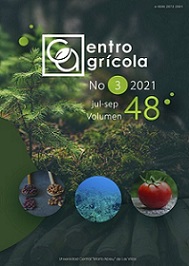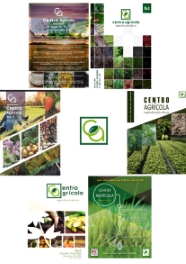CE: 4516 CF: cag072172123
RESEARCH ARTICLE
Pineapple mealybug wilt-associated virus 1, 2 and 3 infection, in pineapples hybrid 'MD-2' in Ciego de Ávila
Infección de Pineapple mealybug wilt-associated virus 1, 2 y 3 en plantas de piña, híbrido 'MD-2' en Ciego de Ávila
Lester Hernández-Rodríguez1, Lelurlys Nápoles Borrero2, Luis Pérez Vicente3, Oscar Vitalio Concepción Laffitte2, Mariela Cid Ruiz2, Yilian Alvares Llanes1, Victoria Zamora Rodríguez1
1Instituto de Investigaciones en Fruticultura Tropical, Ave. 7ma No. 3005 e/30 y 32, Playa, La Habana, Cuba. CP 11300
2Centro de Bioplantas, UNICA. Carretera a Morón, km 9, Ciego de Ávila, Cuba. CP 69450
3Instituto de Investigaciones de Sanidad Vegetal. Calle 110 # 514 Esq. 5ta B, Playa, La Habana, Cuba. CP 11300
E-mail: fitopatologíThis email address is being protected from spambots. You need JavaScript enabled to view it.; This email address is being protected from spambots. You need JavaScript enabled to view it.
ABSTRACT
The etiology of the mealybug wit of pineapple (MWP) disease is associated with a complex of ampeloviruses (Closteroviridae) named Pineapple mealybug wilt-associated virus -1 to -5 (PMWaV-1 to -5). The aims of this study were to determine the specie of PMWaVs associated with MWP symptoms in pineapples plants hybrid ‘MD-2’, and virus presence in asymptomatic crowns of the same cultivar. Six symptomatic plants and 25 asymptomatic crowns were collected in pineapples cv. ‘MD-2’ commercial fields in Ciego de Ávila, during the period 2010-2015. The crowns were used as explants to produce ¨in vitro¨ plants. Total RNAs were extracted to detect PMWaV-1, -2 and -3 by RT-PCR. Five of the six MWP symptomatic plants contained PMWaV-2 infection, four of them with mixed infection with PMWaV-1 and/or PMWaV-3. The forty percent of the 25 in vitro plants were infected, at least, by one PMWaV, 16 % of the three viral species, 8 % by two, and 16 % by only one virus. The incidence of PMWaVs was 38.5 % either for PMWaV-1 and PMWaV-3 (12/31), and 32.3 % for PMWaV-2 (10/31). These results indicate the need of the sanitary certification of pineapple propagation material.





